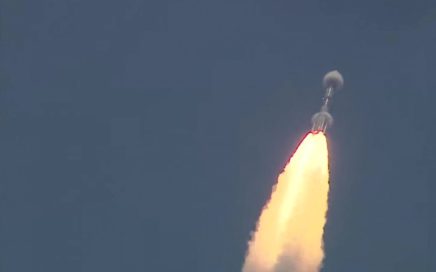
The PSLV-C57.1 rocket carrying the Aditya-L1 orbiter, lifted off successfully from the Satish Dhawan Space Centre in Sriharikota, Andhra Pradesh at 11.50 am on Saturday.
The successful launch of the maiden solar mission of the Indian Space Research Organisation came on the heels of the historic lunar landing mission — Chandrayaan-3.
The ISRO successfully placed a lander on the unexplored lunar South Pole, a feat that put India in the record books as the first country to do so.
According to the agency, the Aditya-L1 mission is expected to reach the observation point in four months.
It will be placed in a halo orbit around Lagrangian Point 1 (or L1), which is 1.5 million km away from the Earth in the direction of the Sun.
It will carry seven different payloads to have a detailed study of the sun, four of which will observe the light from the sun and the other three will measure in-situ parameters of the plasma and magnetic fields.
The largest and technically most challenging payload on Aditya-L1 is the Visible Emission Line Coronagraph or VELC.
VELC was integrated, tested, and calibrated at the Indian Institute of Astrophysics’ Centre for Research and Education in Science Technology campus in Hosakote in collaboration with ISRO.
This strategic location will enable Aditya-L1 to continuously observe the sun without being hindered by eclipses or occultation, allowing scientists to study solar activities and their impact on space weather in real time.
Also, the spacecraft’s data will help identify the sequence of processes that lead to solar eruptive events and contribute to a deeper understanding of space weather drivers.
Major objectives of India’s solar mission include the study of the physics of solar corona and its heating mechanism, the solar wind acceleration, coupling and dynamics of the solar atmosphere, solar wind distribution and temperature anisotropy, and origin of Coronal Mass Ejections and flares and near-earth space weather.
According to the Bengaluru-based Indian Institute of Astrophysics, the atmosphere of the sun, the corona, is what is seen during a total solar eclipse.
A coronagraph like the VELC is an instrument that cuts out the light from the disk of the sun, and can thus image the much fainter corona at all times,
Earlier, on August 23, India became the fourth country after the US, China, and Russia to have successfully placed a lander on the moon’s surface.
After the historic touchdown, the ‘Vikram’ lander and the ‘Pragyan’ rover performed different set tasks on the lunar surface, including finding the presence of sulphur and recording relative temperature.
The stated objectives of Chandrayaan-3, India’s third lunar mission, were a safe and soft landing on the lunar surface, the rover moving on the moon’s surface, and in-situ scientific experiments.
Chandrayaan-3 is the ISRO’s follow-up attempt after the Chandrayaan-2 mission faced challenges during its soft landing on the lunar surface in 2019 and was eventually deemed to have failed its core mission objectives.
















